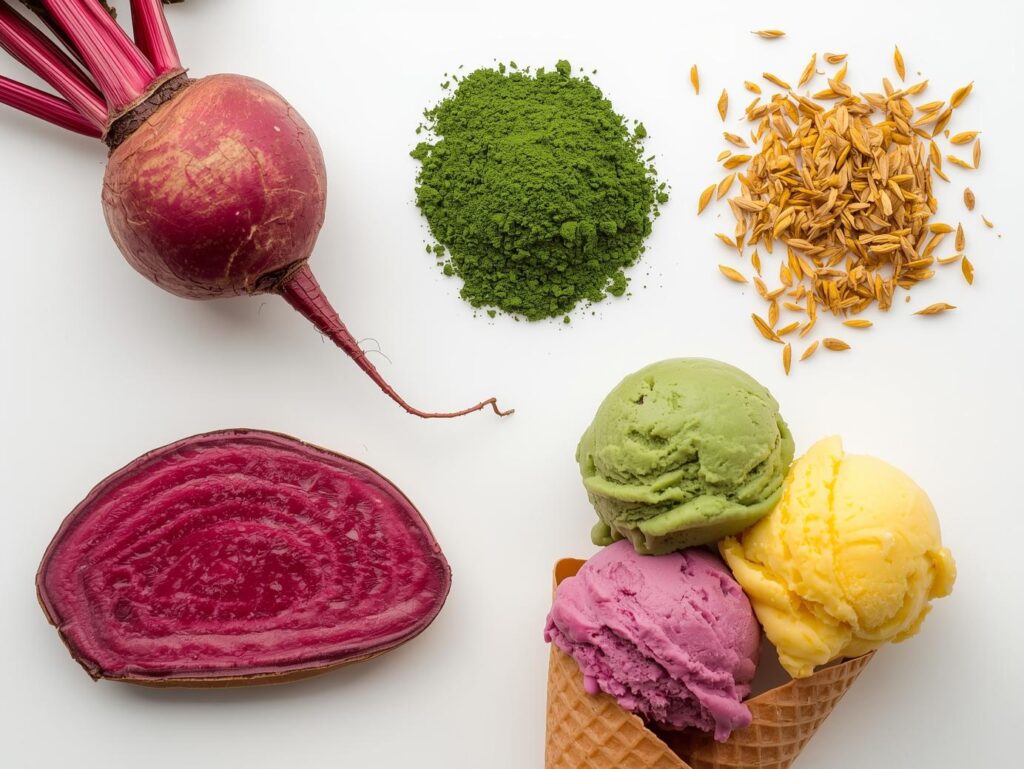In today’s health-conscious and eco-aware world, the demand for natural ingredients is stronger than ever, and this includes how we color our foods.
As consumers increasingly turn away from artificial additives, food producers are embracing natural food colorings derived from fruits, vegetables, herbs, and spices. Coloring with foodstuffs not only enhances visual appeal, but also aligns with the growing desire for clean, wholesome, and trustworthy ingredients.
What Does “Coloring with Foodstuffs” Mean?
Coloring with foodstuffs refers to the use of whole or minimally processed natural ingredients, like beetroot juice, purple sweet potato, spirulina, or safflower to add color to food and drink products. Unlike synthetic dyes or even isolated natural pigments, foodstuffs are typically derived from real, edible sources with recognizable names and nutritional value.
The Key Benefits
1.Clean Label Appeal
Using natural foodstuffs for coloring allows brands to offer “clean label” products, those made without artificial additives and with ingredients consumers recognize and trust. Labels like “colored with beetroot juice concentrate” or “tinted with safflower powder” inspire confidence and transparency, helping products stand out on crowded shelves.
2. Natural Origin, Natural Story
Each natural color tells a story. Red from beetroot evokes images of fresh produce and farm-to-table values. Golden hues from safflower suggest warmth, wellness, and tradition. These narratives tap into consumer emotion and brand loyalty, especially in premium markets where authenticity matters.
3. Health-Conscious Choices
Unlike synthetic colorants, many foodstuffs used for coloring come with added health benefits. For example:
- Beets offer antioxidants and nitrates.
- Spirulina is rich in protein and essential nutrients.
- Sweet potato contains anthocyanin, known for its antioxidant and anti-inflammatory properties.
Though used in small amounts, these ingredients still contribute to a perception of health and vitality.
4. Sustainable and Ethical Sourcing
Natural food colorings often have a lower environmental impact compared to their synthetic counterparts, particularly when sourced from upcycled or local agricultural byproducts. For eco-aware consumers, this adds another layer of value, sustainability meets beauty in every bite.
5. Appealing to all ages
Color is a universal language. Whether it’s a vibrant pink ice cream made with beet root juice or a green smoothie bowl colored with spirulina, naturally colored foods captivate both children and adults. Parents especially appreciate the reassurance that bright colors don’t have to come with artificial ingredients.
Applications Across Industries
Natural coloring with foodstuffs is making waves across multiple sectors:
Bakery and confectionery: Think icing tinted with beetroot, fruit caramel color enhanced by spirulina.
Beverages: Herbal teas or juices brightened with purple sweet potato.
Dairy: Yogurts and cheeses, ice creams with natural hues from saffron.
and many more.
A Colorful Future, Naturally
In a market driven by wellness, transparency, and sustainability, coloring with foodstuffs offers a win-win solution for both brands and consumers. It elevates product aesthetics while staying true to nature. For businesses, it’s a strategic move toward innovation and integrity. For customers, it’s a sign that what’s on their plate is as real and wholesome as it looks.
Natural, vibrant, and meaningful coloring with foodstuffs is more than a trend. It’s the future of food.
Want to discuss natural colors and Foodstuffs that fit your application, we stay at your service at info@qsproduct.com
Check other solutions @ Quantum satis

